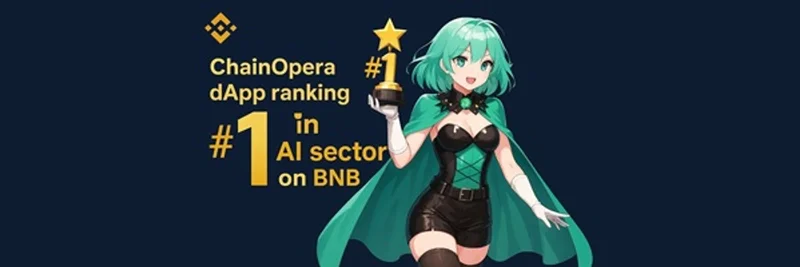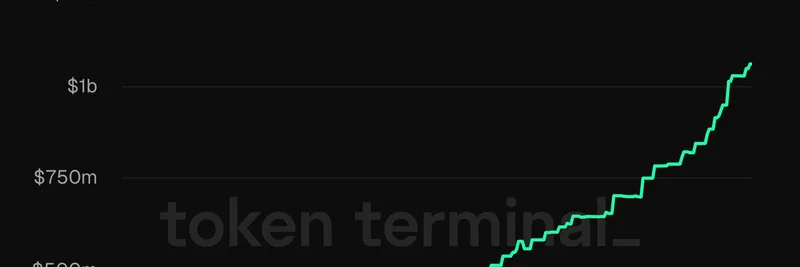ChainOpera AI (COAI) is building a decentralized network for creating and running AI agents, models, and compute infrastructure on the BNB Smart Chain (BSC). Its core idea is to let users, developers, and resource providers co-own and co-create an open AI ecosystem—summed up by “Co-Own. Co-Create. CoAI.” A keystone of the design is the on-chain Proof of Intelligence (PoIC) protocol, which tracks contributions (like data, agent outputs, or GPU resources) and distributes rewards transparently.
Below is a concise, practitioner-friendly overview of the technology, tokenomics, market activity, listings, community traction, funding, and the main risks to watch.
What makes ChainOpera AI different
- Proof of Intelligence (PoIC): An on-chain measurement and reward system that attributes value to contributions from agents, data providers, and compute providers. Think of it as a “proof-of-work”-style accounting layer, but for AI-related work.
- Community-first marketplace: Developers can deploy AI agents, users can consume them, and resource providers can supply compute. The model aims to return a larger share of value to contributors versus centralized AI platforms.
- Built on BNB Chain: COAI leverages BNB Smart Chain for low fees and fast confirmation times.
Tech stack at a glance
- AI Terminal: A user interface to discover and use community-built AI agents for tasks such as DeFi management (DeFAI) and payments (PayFAI).
- Agent Platform / Social Layer: A marketplace to build, launch, and monetize agents with discoverability and social features.
- Decentralized Compute Layer: Connects GPU providers with model developers and uses federated learning to keep training data private while improving models.
- AI-Native Blockchain: A coordination layer for verifiable ownership, attribution, and transparent participation records across the ecosystem.
If you’re new to federated learning: it lets multiple participants train a model collaboratively without sharing raw data, improving privacy and compliance.
COAI tokenomics (BEP-20 on BNB Chain)
- Total supply: 1,000,000,000 COAI (fixed; no further emissions).
- Circulating supply at TGE (Sept 25, 2025): ~19.65% (≈196.5M COAI); current circulating ~196.48M.
- Allocation (community-first focus):
- Collective Community Share: 58.5%
- Ecosystem Development: 26.9% (dev programs, infra, hackathons, upgrades)
- Community Incentives: 22.7% (AI creators, resource providers, user engagement)
- Early Distribution & Airdrops: 9% (e.g., Binance Alpha Airdrop ~3%)
- Core Team & Contributors: 23.1%
- Early Backers & Investors: 15.9%
- Advisors: 1.5%
- Liquidity & Market Stability: 1%
- Collective Community Share: 58.5%
- Vesting: Team, backers, and advisors have a 1-year cliff (to Sept 2026) followed by 36 months of linear unlocks. Expect ~8–11M tokens unlocking monthly.
- Utility:
- Access: Unlock premium features and developer tools in the Terminal and Agent Platform.
- Rewards: Earn COAI for verifiable contributions (e.g., feedback, data, or compute).
- Governance: Vote on technical standards, upgrades, and resource allocation.
- Payments: Medium of exchange for AI services within the ecosystem.
Note: COAI is a utility token; it does not represent equity or profit sharing. Its value is tied to actual usage of the network and demand for services.
Market performance snapshot
- Breakout phase: Following its TGE and the BNB Alpha Airdrop in October 2025, COAI saw rapid appreciation—over 600% in 24 hours and more than 1,220% weekly in one stretch—pushing market cap into the hundreds of millions.
- Market capitalization: Reported ranges vary with volatility—from roughly $1B to over $20B at peaks.
- Volume: 24-hour volumes have frequently reached tens to hundreds of millions (USD).
- Volatility: Multiple sharp rallies and corrections, including spikes of 800% followed by drawdowns. Some market observers have characterized the price action as resembling a pump-and-dump pattern; exercise caution and size positions accordingly.
Where to trade COAI
For real-time data, smart money tracking, security checks, and trading, you can use GMGN.AI. The platform also supports automated trading via Telegram if you choose to link your account (see: https://t.me/gmgnaibot?start=i_fV1R5sZ5).
Other venues where COAI is actively traded include:
- Centralized exchanges: Bybit, Bitget, MEXC, Gate.io, Phemex (futures) at phemex.com, OrangeX, Aster Exchange, BitMart, and BingX. Some users also reference Binance Alpha listings.
- Decentralized exchanges on BNB Chain: PancakeSwap and Uniswap deployments compatible with BSC.
Important: Contract-address discrepancies have been noted by various data sources. Always verify the token contract on the project’s official channels before swapping to avoid impersonators.
Community and adoption
- Reported traction (as of Oct 2025): Over 2M registered users, 100k creators, and 10k actively running agents.
- Payments & users: Since launching AI payments on BNB Chain in May 2025, the ecosystem cites over 3M AI users and 300k BNB payers.
- Growth drivers: Rising exchange coverage, strong user growth, and broader “BNB Season” momentum within crypto-AI.
Funding and backers
- Seed round: $17M (Dec 2024).
- Lead investors: Finality Capital Partners, Road Capital, Modular Capital, and IDG Capital.
- Other backers: Amber Group, ABCDE Capital, Acequia Capital, Sparkle Ventures, Plug and Play, plus angels including Sreeram Kannan (EigenLayer).
Key risks and security considerations
- Centralized contract control: Analyses indicate COAI uses a proxy contract with ownership not renounced. This means admins can potentially change core functions (e.g., minting, pausing transfers, adjusting fees). While proxies enable upgradability, they concentrate power and introduce governance risk.
- Uneven token distribution: Reports suggest a handful of addresses may control significant supply. Concentration can amplify sell pressure, enable coordinated dumps, or distort price discovery.
- Pump-and-dump characteristics: Large spikes and rapid reversals have led some to describe the token’s behavior as pump-and-dump-like. Whether intentional or not, traders should expect high variance and use strict risk management.
- Unlock overhang: With a long vesting schedule and monthly unlocks (~8–11M COAI), recurring supply could pressure price unless offset by demand growth.
- Early-stage execution risk: Long-term success depends on sustained developer engagement, credible PoIC adoption, and real user demand for agents and compute.
Security tip: Before trading on DEXs, run standard checks (honeypot, tax levels, liquidity locks, proxy status). Platforms like GMGN.AI surface these signals in real time.
Bottom line
ChainOpera AI aims to align incentives across AI creators, compute providers, and users with PoIC-backed attribution on BNB Chain. The vision is compelling, the community is growing, and the exchange footprint is broad. At the same time, centralized contract control, distribution concentration, and pronounced volatility make COAI a high-risk asset. If you participate, verify the correct contract, monitor unlock schedules, use reputable trading venues (including GMGN.AI), and size your exposure responsibly. This overview is for educational purposes only and not financial advice.


